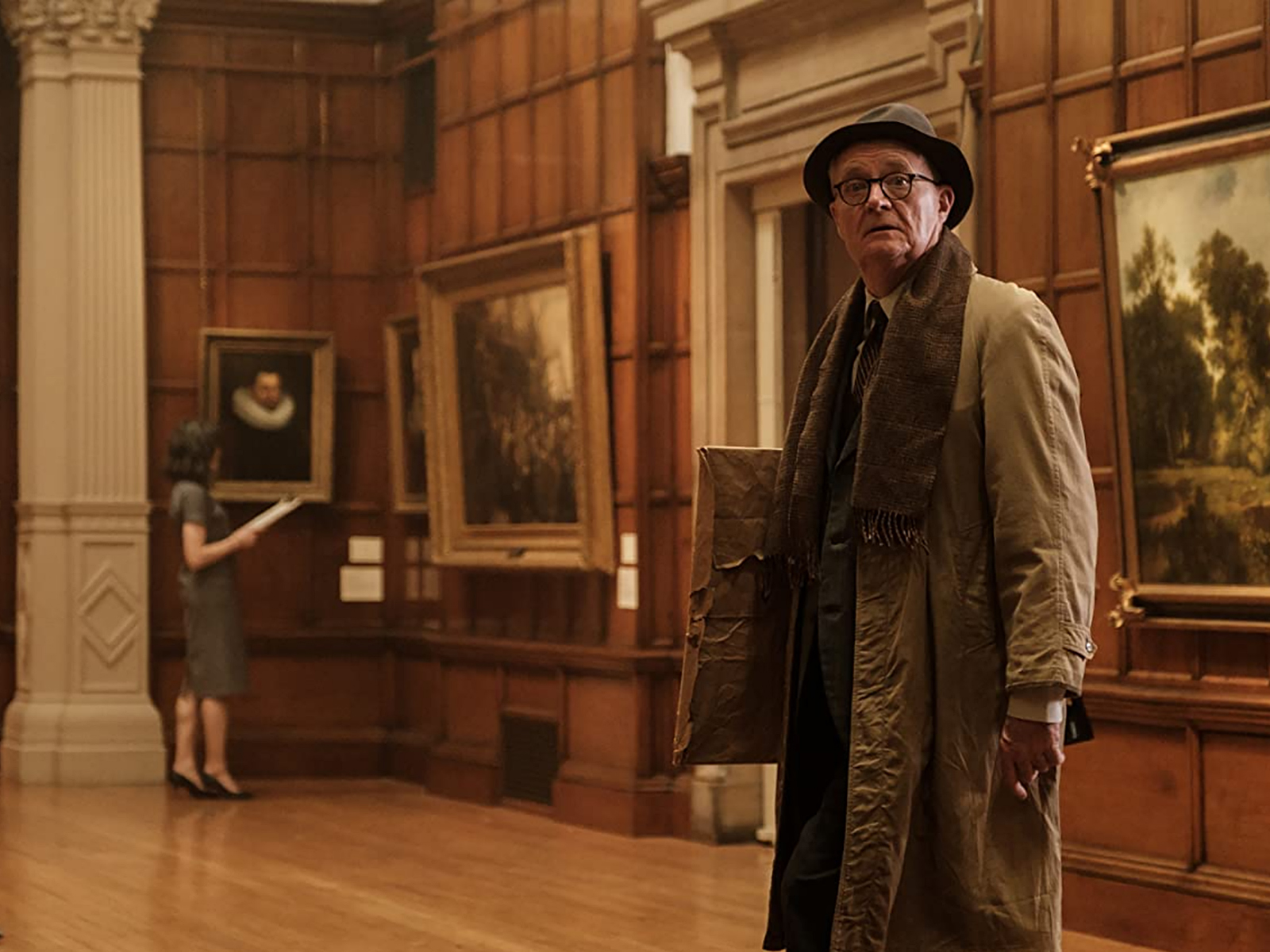
- Film
“Duke”-ing It Out
14 months ago, during the unprecedentedly difficult, pandemic-ravaged Venice Film Festival, a movie had its world premiere without the usual fanfare, with no receptions and a sad and empty red carpet where no fans cheered from the bleachers. The film was called The Duke and it deserved better. Like so many others in these last almost two years, its producer realized that the old joke, “How do you make God laugh? – Tell him your plans,” was indeed true. The Duke, originally planned for a 2020 release, was put on hold, in hindsight a very smart decision as we are now hopefully moving away from only being able to watch cinematic pieces on the small screen and returning to enjoying a night out at the “real” movies.
The Duke is the little-known but true story of a man named Kempton Bunton from Newcastle in North England who decided to “borrow” the world-famous painting of the Duke of Wellington by Francisco de Goya from the National Gallery in London in an attempt to blackmail the government into making the BBC TV channels available free to all retirees.
The film’s portrayal of the trial that followed the painting’s “return” feels like a comedy, but is largely taken from court transcripts, in which Bunton, played in the film by Jim Broadbent, delivers one punchline after another on the stand. Broadbent is joined in the cast by Helen Mirren as his wife Dorothy and Fionn Whitehead (Dunkirk) as their son Jackie. Matthew Goode plays the lawyer. Roger Michell (Blackbird, My Cousin Rachel), who sadly died in September, directed, and Nicky Bentham (Moon) produced. The film finished shooting “literally two weeks before lockdown,” said Michell in an interview before he died.
Don’t feel bad if you are not familiar with this quirky story. Even most Brits have never heard of it – the government was clearly not ecstatic about the incident, and it is not exactly a part of history taught in schools. Admits Broadbent: “I didn’t know anything about it. It rang a very vague bell in my head when I read the script. It is strange because in 1961, I was 11 years old, and it was a big story in the press at the time. But it had been forgotten since.”
Producer Bentham came across it and then, as she told us, optioned “the account that his grandson Christopher Bunton wrote about his grandfather’s life as well as all of Kempton’s plays and memoirs and all the family material from his son Jackie, who is still alive, the life rights.” Jim Broadbent read the script and jumped at the chance to play such an interesting character: “He was forward-thinking, he wanted the democratic process to open up and make everyone equal. But he is an unreconstructed chauvinist and treats his wife appallingly, wants her to go out and work in the most menial jobs while he doesn’t mind getting sacked from various jobs himself. He lost lots and lots of jobs, many more than we see in the film.” Added Roger Michell: “He steals toilet paper rolls; he takes flowers off of someone else’s grave to put them on his daughter’s. He is a bore, he talks and talks and talks, he bosses other people around, he likes sitting around while his wife makes him tea. So, in those respects, he’s rather an irritating person.”
Michell commented that what makes Bunton loveable, and even able to become the film’s hero despite his flaws, are his Robin Hood-like actions: “Within this eccentric, there is this extraordinary sense of right and wrong with this vision of connectedness,” he said. The leading man agrees: “He was a good man who had his heart in the right place and wanted to do good things. It was interesting to play a character who had those two sides. He was rude but then he was above all kind. It’s a good way to build a character with those contradictions. When he’s not kind, he’s not aware of it. He wanted everyone to live together in harmony.”
Roger Michell told Nicky Bentham that no one but Jim Broadbent could play the part and that he did not believe he could do the film without him. At this point, the script had already been sent to Helen Mirren, although no one expected her to take the role: “I never expected her to play this smaller part of a woman that cleans other people’s houses. She is not exactly wearing a tiara in this film! She has no make-up; she is heavier than we’re used to seeing her and she had no padding. I was delighted she jumped at the part.” And very happy, when Broadbent, too, said yes.
An interesting side note: the painting turned up in the first James Bond film, Dr. No: Sean Connery can be spotted doing a quick double-take upon seeing it. Roger Michell used the scene in a scene where Kempton and Dorothy Bunton watch TV: “No one ever remembers that the painting is in a Bond movie. It’s the proverbial gorilla that walks through the room and no one sees it!” said the director.